Brewing Beer with Aromatic Malt
Published: August 1, 2025 at 9:35:29 AM UTC
Last updated: December 9, 2025 at 8:19:39 PM UTC
Brewing beer with Aromatic Malt is a technique used to create a variety of beer styles, including Saison and Belgian ales. These styles are known for their complex flavor profiles. Aromatic Malt contributes to the development of deep malt aromas and honeyed toast flavors. This enhances the overall character of the beer. By incorporating Aromatic Malt into their recipes, brewers can achieve a richer, more nuanced flavor profile in their beers. The key to successfully brewing with Aromatic Malt lies in understanding its characteristics. It's also important to know how it interacts with other ingredients. This produces the desired honeyed toast flavors.
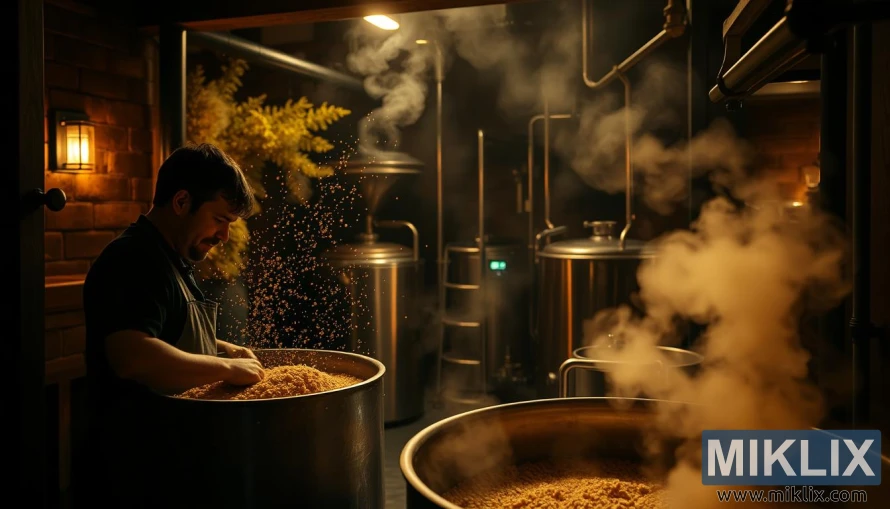
Key Takeaways
- Understand the role of Aromatic Malt in brewing beer.
- Learn how to achieve deep malt aromas and honeyed toast flavors.
- Discover the best practices for incorporating Aromatic Malt into your brewing recipe.
- Explore the various beer styles that benefit from Aromatic Malt.
- Gain insights into optimizing your brewing process for complex flavor profiles.
Understanding Aromatic Malt Fundamentals
Aromatic Malt, a specialty malt, is key in shaping beer flavors. It's malted barley kilned at high temperatures to boost its aroma. This process enhances its aromatic properties.
The malting of barley is done to a precise level, then kilned at specific temperatures. This brings out its unique aroma. It adds a rich, malty flavor and complexity to beer.
Aromatic Malt is known for its intense malt aroma and flavor. It can have notes of honey, toast, and caramel. Its versatility makes it a valuable ingredient in brewing.
- Enhances the beer's aroma and flavor profile
- Contributes to the overall complexity of the beer
- Can be used in a variety of beer styles, from ales to lagers
Aromatic Malt's uses vary across different beer styles. For example, it's often used in:
- Amber and red ales to add a malty, caramel flavor
- Porters and stouts to enhance the beer's complexity and depth
- Some lagers to introduce a richer malt character
Understanding Aromatic Malt is essential for brewers. It allows them to create beers with improved flavor and aroma. By using Aromatic Malt, brewers can elevate their beer's profile.
The Science Behind Malt Aromatics
For brewers aiming to craft beers with unique aromas, grasping the science of malt aromatics is essential. These aromas stem from the complex biochemical reactions during malting and brewing. It's a journey through the intricacies of malt processing.
Enzymes are at the heart of malt aromatics. They transform complex molecules into simpler, aromatic ones. This transformation is key to the beer's aroma. Several enzymes are involved in this process:
- Amylase: breaks down starches into fermentable sugars
- Protease: breaks down proteins into amino acids, which contribute to flavor and aroma
- Lipase: breaks down lipids into fatty acids, influencing the beer's flavor profile
Flavor compounds are another critical aspect of malt aromatics. These compounds come from malt, hops, and yeast. The variety and amount of these compounds in the malt greatly affect the beer's aroma.
The brewing process significantly influences malt aromatics. Variables like mashing temperature, brewing duration, and fermentation conditions all play a role. For instance:
- Mashing at higher temperatures can result in a more complex, malty aroma
- Longer brewing times can lead to a greater extraction of flavor compounds from the malt
- Fermentation conditions, such as temperature and yeast strain, can impact the types and quantities of flavor compounds produced
In conclusion, the science behind malt aromatics is complex and multifaceted. It involves enzymes, flavor compounds, and brewing processes. By understanding these factors, brewers can craft beers with unique and captivating aromas.
Color Profile and Visual Characteristics
Aromatic malt plays a significant role in shaping the color and look of beer. The color of beer is a key aspect of its appearance. It greatly influences the drinking experience.
The color of beer is influenced by several factors. These include the type and amount of malt used, and the brewing process. Aromatic malt adds to the beer's richness, creating colors from golden to darker shades. This depends on the malt variety and roasting level.
Ingredients like hops and specialty grains also impact the beer's color. The mix and amount of these ingredients can lead to a variety of colors. This range spans from pale straw to dark brown.
The look of beer, including its clarity and head retention, is vital. Aromatic malt can improve these aspects. It makes the beer more appealing and refreshing.
- The type and amount of malt used can significantly impact the color profile.
- Specialty grains and hops can also influence the final color.
- Aromatic malt enhances the visual characteristics, including clarity and head retention.
Brewers can achieve the desired color and look by carefully choosing ingredients. This enhances the brewing aesthetics. It creates a more engaging drinking experience.
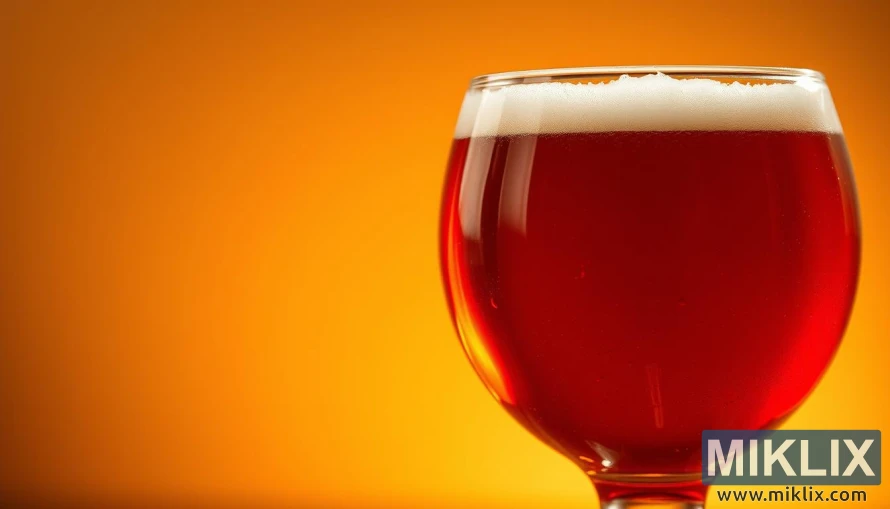
Flavor Components of Aromatic Malt
Aromatic Malt brings a rich array of flavors to brewing, highlighted by the distinct honeyed toast notes. This complexity stems from its unique production process. It enhances both its aromatic and flavor properties.
Aromatic Malt adds several key flavor components to beer:
- Deep, malty sweetness
- Honeyed toast flavors
- Nuanced toasted notes
- A hint of caramel-like sweetness
These flavors emerge during malting, where grains are heated to achieve the desired taste and aroma. This process results in a malt that enriches the beer's depth and complexity.
The honeyed toast flavors stand out, elevating the beer's sophistication. This is achieved by controlling temperature during malting. It promotes the formation of the desired flavor compounds.
In summary, Aromatic Malt is a versatile ingredient that significantly enhances beer flavors. Its complex components, including honeyed toast, make it a valuable addition to many brews.
Optimal Usage Rates in Different Beer Styles
Different beer styles demand specific usage rates of Aromatic Malt to hit the right flavor notes. Aromatic Malt is a staple in Saison and Belgian ales, adding depth and complexity.
The right amount of Aromatic Malt varies by beer style. For Saison and Belgian ales, it's usually 5-10% of the total grain bill. This ensures a balanced flavor with a strong malt aroma.
Here are some general guidelines for Aromatic Malt usage in various beer styles:
- Saison and Belgian ales: 5-10%
- Amber and Red ales: 3-6%
- Bock and Doppelbock: 10-15%
- Pale ales and IPAs: 2-5%
- Porter and Stout: 5-10%
Remember, these are just guidelines. The perfect usage rate can vary with each recipe and brewing method. Tasting and experimenting are key to finding the ideal amount for your beer.
When using Aromatic Malt, consider the malt type, origin, and moisture content. These factors can significantly affect the beer's flavor and aroma.
Temperature Considerations During Brewing
Temperature control is key in brewing to bring out malt aromatics fully. The brewing process has several steps that depend on temperature, each shaping the beer's flavor and aroma.
The brewing temperature greatly impacts the extraction of malt aromatics and the beer's flavor profile. In mashing, the temperature controls enzyme activity, breaking down starches into fermentable sugars. A temperature range of 152°F to 158°F (66°C to 70°C) is common, with the precise temperature varying based on sugar profile needs.
Temperature also influences the boiling and fermentation stages. Boiling at around 212°F (100°C) is vital for sterilization, hop utilization, and flavor/color development. Fermentation temperature, which changes with yeast strain, affects the production of byproducts that enhance flavor and aroma.
Here are the optimal temperature ranges for brewing:
- Mashing: 152°F to 158°F (66°C to 70°C)
- Boiling: around 212°F (100°C)
- Fermentation: varies by yeast strain, typically between 65°F to 75°F (18°C to 24°C)
Keeping the optimal temperature during brewing is essential for achieving the desired flavor and aroma. By understanding how temperature affects malt aromatics and flavor, brewers can refine their processes.
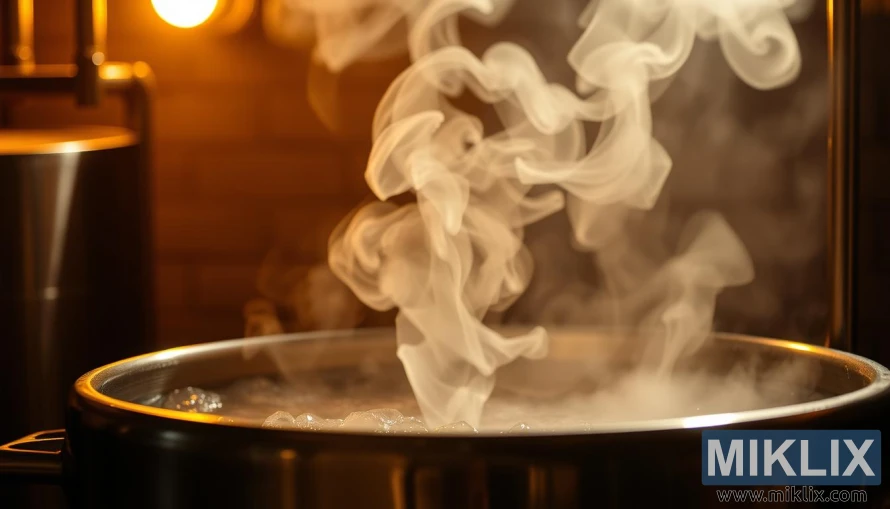
Mashing Techniques for Maximum Flavor Extraction
To brew exceptional beer, understanding and applying the right mashing techniques is essential. Mashing is a critical step in the brewing process. Here, grains are mixed with hot water to extract fermentable sugars, enzymes, and other compounds. These compounds contribute to the beer's flavor, aroma, and overall character.
The effectiveness of the mashing process can significantly impact the quality of the final product. Different mashing techniques can be employed to achieve specific flavor profiles and characteristics in the beer. The choice of technique depends on the type of beer being brewed, the equipment available, and the brewer's preferences.
One common mashing technique is infusion mashing, where the grains are mixed with hot water in a single step. This method is straightforward and works well for many beer styles. Another technique is step mashing, which involves a series of temperature changes during the mashing process. This activates different enzymes and extracts a broader range of compounds from the grains.
Decoction mashing is a more complex technique that involves removing a portion of the mash, boiling it, and then returning it to the main mash to achieve the desired temperature. This method can add depth and complexity to the beer but requires more time and effort.
- Infusion mashing: Simple and effective for many beer styles.
- Step mashing: Allows for a broader range of enzymatic activity.
- Decoction mashing: Adds complexity and depth through a more labor-intensive process.
The choice of mashing technique is critical for maximizing flavor extraction and achieving the desired characteristics in the final beer. By understanding and applying the appropriate mashing techniques, brewers can significantly enhance the quality of their beers.
Pairing Aromatic Malt with Other Grains
Aromatic Malt, when combined with other grains, enriches the beer's flavor and aroma. The grain bill is key in brewing, setting the stage for the beer's character.
Choosing grains like Aromatic Malt, Munich Malt, and Pilsner Malt allows brewers to craft unique flavors. Aromatic Malt's rich, malty aroma pairs well with complementary grains. For example, mixing it with Pilsner Malt balances the flavor, with the crispness of Pilsner Malt countering Aromatic Malt's richness.
When crafting the grain bill, brewers must balance each grain's proportion. The ratio of Aromatic Malt to other grains greatly affects the beer's character. A higher Aromatic Malt ratio can intensify the malty flavor, while a smaller amount adds subtle complexity.
The type of beer also guides the grain selection and proportions. For a Märzen or Oktoberfest, brewers might use more Aromatic Malt and Munich Malt for a rich flavor. In contrast, a Pilsner might require more Pilsner Malt for a crisp taste.
In summary, blending Aromatic Malt with other grains is essential in brewing. By carefully choosing and balancing brewing ingredients, brewers can create complex, balanced flavors that enhance their beers' overall character.
Impact on Beer Head Retention and Body
The inclusion of Aromatic Malt in brewing significantly enhances the quality of beer, focusing on beer head retention. This refers to the foam's stability and longevity on top of the beer. It's a key factor in a beer's appearance and quality.
Aromatic Malt boosts beer head retention due to its protein and lipid content. These elements are vital for foam stability. The brewing science behind it involves the interaction of proteins, lipids, and other compounds. They work together to fortify the beer foam.
The body of a beer is also enriched by Aromatic Malt, adding complexity and depth to its texture. By grasping how Aromatic Malt influences beer head retention and body, brewers can refine their recipes. This ensures their beers meet the desired characteristics.
In conclusion, Aromatic Malt is a vital ingredient in brewing, improving both beer head retention and body. Its role in stabilizing foam and elevating overall beer quality is essential in the brewing process.
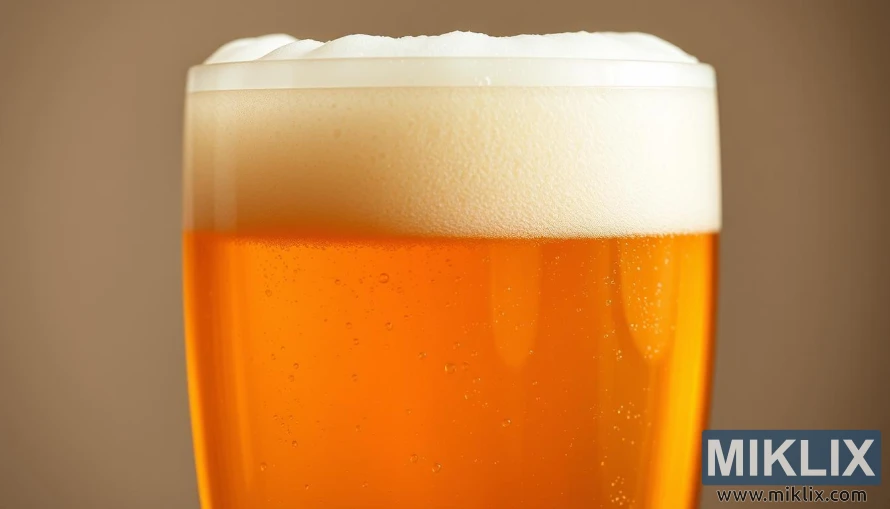
Storage and Handling Best Practices
To keep the flavor of Aromatic Malt intact, it's vital to adhere to the best storage and handling practices. This malt, like other brewing ingredients, is sensitive to moisture, temperature, and light.
Proper storage is key to preserving Aromatic Malt's quality. Here are some essential guidelines:
- Store Aromatic Malt in a cool, dry place, away from direct sunlight and moisture.
- Keep the storage area at a consistent temperature between 50°F to 70°F (10°C to 21°C).
- Use airtight containers to prevent exposure to air and moisture.
- Minimizing exposure to air during handling to prevent oxidation.
- Keeping the malt away from strong-smelling ingredients to prevent cross-contamination of flavors.
- Using clean equipment when handling the malt to prevent contamination.
By sticking to these best practices for storage and handling, brewers can ensure their Aromatic Malt stays fresh. This ensures it retains its characteristic flavor and aroma, ultimately leading to a better-tasting beer.
Common Brewing Mistakes to Avoid
To get the most out of Aromatic Malt, brewers need to steer clear of common pitfalls. This specialty malt enhances beer's depth and complexity. Yet, its misuse can introduce unwanted flavors and aromas.
One frequent blunder is overusing Aromatic Malt, which can upset the beer's balance. Another mistake is neglecting to adjust mashing techniques for this malt. This oversight hampers the extraction of its aromatic compounds.
- Incorrect storage and handling of Aromatic Malt can cause it to lose its potency and flavor.
- Not considering the malt's impact on the beer's overall character and adjusting the recipe correspondingly.
- Failing to monitor and control brewing temperatures, which can affect the malt's contribution to the beer's flavor and aroma.
By recognizing these common brewing errors, brewers can take corrective actions. This includes meticulous planning of recipes, adjusting brewing techniques, and ensuring proper storage and handling of the malt.
By sidestepping these errors, brewers can fully harness Aromatic Malt's capabilities. This leads to the creation of complex, flavorful beers that highlight its unique qualities.
Recipe Development Guidelines
Creating recipes with Aromatic Malt demands a deep grasp of its complex flavor profile. This malt adds a rich, malty aroma to beers, elevating their character. It's perfect for various beer styles.
To successfully use Aromatic Malt in brewing, balancing its strong flavor with other ingredients is key. It's important to see how it interacts with grains and hops. This ensures a balanced flavor profile in the beer.
- Begin with a base malt that complements Aromatic Malt's flavor.
- Adjust the Aromatic Malt proportion to achieve the right maltiness level.
- Match the beer style to the recipe, tailoring it as needed.
- Balance malt flavor with the right hops and quantities.
Recipes that include Aromatic Malt can produce complex, full-bodied beers. These beers boast rich malt characteristics. By mastering the use of Aromatic Malt, brewers can craft unique, delicious beers that truly stand out.
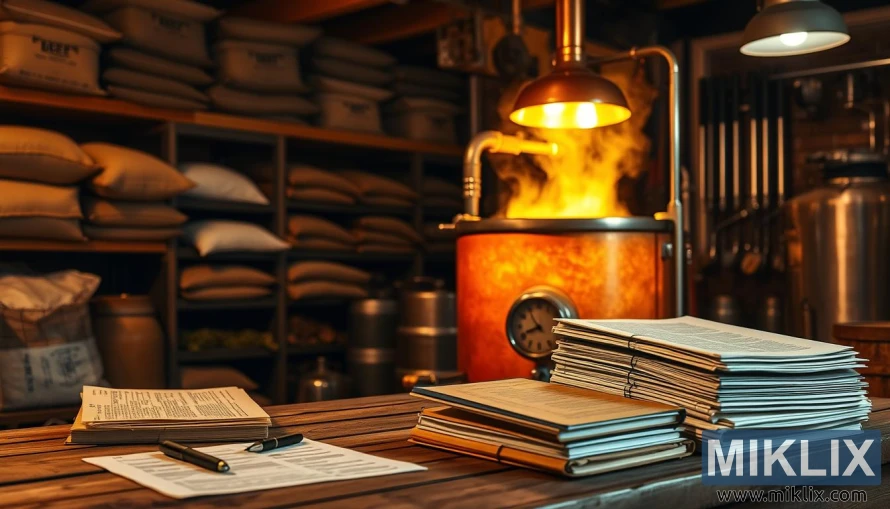
Quality Assessment Methods
Evaluating the quality of Aromatic Malt is essential for brewers aiming to produce beer that meets their standards. Aromatic Malt plays a significant role in shaping the beer's flavor and aroma. This makes its quality assessment a vital step in the brewing process.
To evaluate Aromatic Malt quality, brewers should focus on its flavor profile, aroma, and overall quality. The flavor profile can be assessed by tasting the malt, either alone or as part of a brew. A high-quality Aromatic Malt should exhibit a rich, malty flavor with notes of sweetness and toasted hints.
The aroma of Aromatic Malt is also a critical factor in its quality assessment. Brewers should seek out a malt with a pronounced, pleasant aroma that is typical of its type. The overall quality can be evaluated by considering the malt's moisture content, grind size, and storage conditions.
Some key methods for assessing Aromatic Malt quality include:
- Moisture content analysis to ensure it's within the optimal range.
- Grind size evaluation to confirm it meets the brewery's specifications.
- Sensory evaluation to assess the malt's flavor and aroma.
By implementing these quality assessment methods, brewers can ensure their Aromatic Malt meets the necessary standards. This contributes to the production of high-quality beer.
Commercial Examples and Inspiration
Aromatic Malt is inspiring brewers to explore beyond traditional beer styles. Breweries are now experimenting with this malt to craft complex and unique beers.
Many commercial breweries have successfully incorporated Aromatic Malt into their recipes. For instance, Saison brewers are using it to enhance the dry, hoppy flavor profile typical of this style. Belgian ales are also benefiting from Aromatic Malt, adding depth and complexity.
- Saisons with a pronounced malt backbone
- Belgian ales with enhanced complexity
- Amber ales with a rich, malty flavor
These examples showcase Aromatic Malt's versatility and its ability to elevate various beer styles. By examining these commercial examples, brewers can find inspiration for their own recipes. They can also experiment with new flavor profiles.
Conclusion
Mastering Aromatic Malt is essential for brewers aiming to craft beers with complex and balanced flavors. Understanding its fundamentals allows brewers to fully harness its capabilities, significantly improving their beer's quality.
This article delved into the science behind malt aromatics, the right usage rates, and mashing techniques. By applying these principles, brewers can achieve mastery in brewing. They can then create distinctive beers that highlight Aromatic Malt's unique qualities.
To enhance your brewing expertise, try experimenting with various Aromatic Malt types and combining them with other grains. This approach will deepen your grasp of how Aromatic Malt influences your beer's flavor and aroma.
By integrating Aromatic Malt into your brewing, you can craft beers that are rich and complex, pleasing the palate. As you hone your skills further, you'll be well on your way to brewing mastery. You'll then be able to produce exceptional beers that showcase Aromatic Malt's finest attributes.
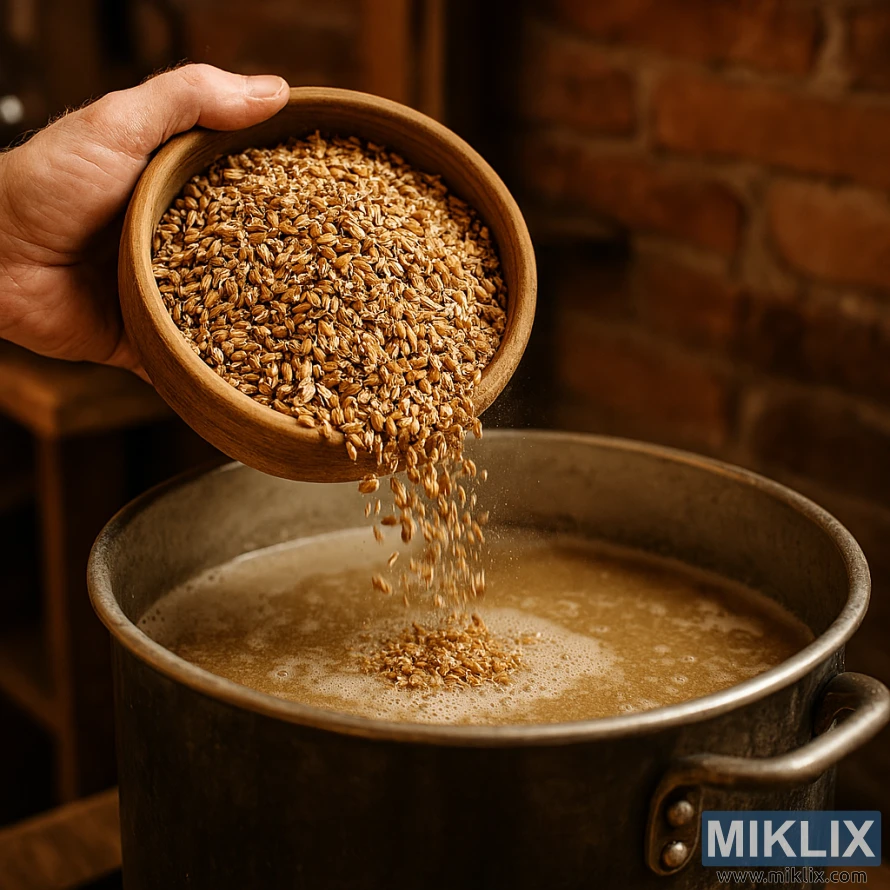
Further Reading
If you enjoyed this post, you may also like these suggestions:
- Malt in Homebrewed Beer: Introduction for Beginners
- Brewing Beer with Pale Chocolate Malt
- Brewing Beer with Melanoidin Malt
